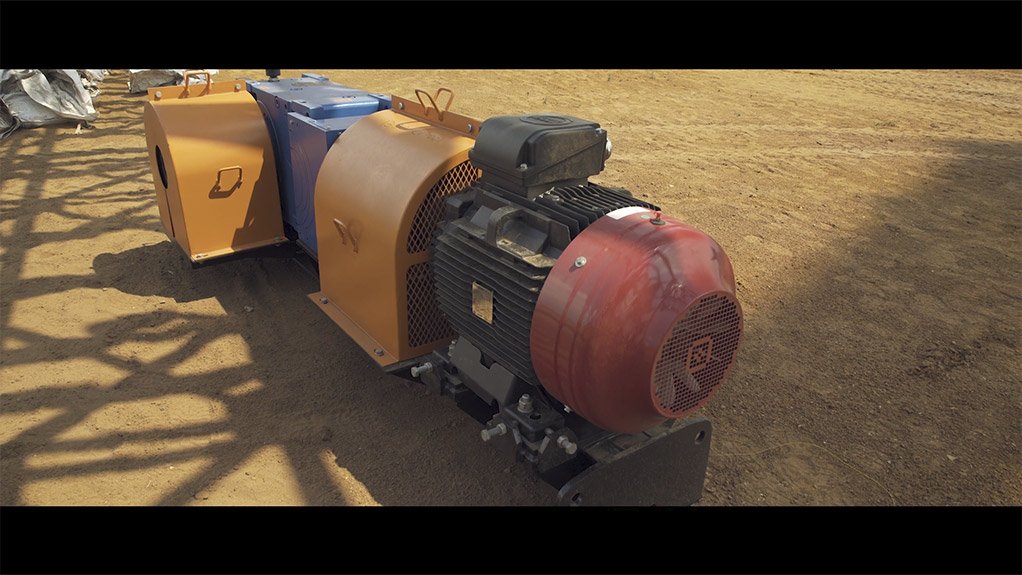Collaboration to develop heavy-duty motors


SYMBIOTIC SYNERGY The collaboration between two research ad development departments has led to the development of the Synergy IE3 range of electric motors
Industrial products supplier BMG’s electric motor designers and engineers have collaborated with global electric motor specialists to develop the Synergy IE3 range of electric motors that meet stringent quality standards and set the benchmark locally for arduous duty, high efficiency motors.
These motors have a rated voltage of 400 V and 525 V, and rated frequency of 50 Hz.
The Synergy IE3 range is constantly being upgraded to meet specific requirements for South Africa’s tough mining and industrial conditions.
“Apart from critical energy saving features, BMG’s Synergy IE3 motors have important advantages over other electric motors on the market,” says BMG Electric Motors business unit manager Graeme Neilson.
He explains that these benefits include a lower cost of operation, suitability for voltage variation applications, reduced temperature rises and minimal maintenance requirements.
Further, Synergy motors also offer greater reliability, reduced noise and vibration levels, more flexibility and longer service life, according to BMG.
“The BMG range of Synergy IE3 motors, developed specially for harsh mining conditions in Africa, has standard features that include an Ingress Protection 66 rating against dust and water ingress and a Class H insulation rating, with a Class B temperature rise rating.
This means that the insulation of the motors can handle much greater heat than the motor’s operating temperature at full load.
An important performance feature of the Synergy IE3 motors is that they are most efficient when running at between 75% and 100% load factors.
“The efficiency and power factor values make these motors cost-effective, with a return on investment of between three and five years,” he says.
An electronic soft starter – which controls parameters like the current and voltage of electric motors – ensures the starting sequence of the Synergy IE3 motors is efficiently controlled.
Standard motors operate at fixed speed, regardless of the actual output required, while Synergy motors can operate efficiently, without cogging at low speed, in conjunction with a variable-speed drive (VSD), reducing energy consumption by over 50%.
VSDs are designed to manipulate power from a constant three-phase 50 Hz or 60 Hz supply, converting it to variable frequency.
This enables the speed of the motor to be controlled to achieve maximum efficiency at the required load.
Synergy IE3 motors have been surface treated to ensure extended service life and for maximum flexibility during installation, while both have removable feet available. Solid motor feet provide a more resistant structure against vibration, while removable feet can be placed in different positions of the motor frame.
The latest design enables the terminal box to be mounted in a top, right or left position and the cable entry can be rotated 360º, without disassembly of the motor being required. “This minimises modification time and reduces stockholding,” says Neilson.
BMG specialists recommend installing a shock pulse measurement bearing monitoring device for continuous monitoring of the bearing condition.
Synergy has also developed aluminium housing motors, with cast iron end shields, from frame 56 to frame 180. Advantages of this design include a robust structure and reduced noise.
BMG offers a full range of Synergy IE3 motors currently in stock, and can also supply IE4 and IE5 units from the factory, to meet specific requirements on every mine.
Standard Synergy three-phase asynchronous cast iron motors encompass the latest technology in electric motor design and are used in many industries, including mining and metallurgy, pumps and water treatment, petroleum, chemical, cement, and sugar and paper milling.
BMG’s electromechanical team offers a technical advisory and support service throughout the entire Southern African region.
In another milestone for the company, BMG was awarded two South African National Standards (SANS) certifications in July – SANS 1804-1:2012 for its induction motors that meet the International Electrotechnical Commission’s requirements and SANS 1804-2:2012 for its low-voltage three-phase standard motors.
Article Enquiry
Email Article
Save Article
Feedback
To advertise email advertising@creamermedia.co.za or click here
Comments
Announcements
What's On
Subscribe to improve your user experience...
Option 1 (equivalent of R125 a month):
Receive a weekly copy of Creamer Media's Engineering News & Mining Weekly magazine
(print copy for those in South Africa and e-magazine for those outside of South Africa)
Receive daily email newsletters
Access to full search results
Access archive of magazine back copies
Access to Projects in Progress
Access to ONE Research Report of your choice in PDF format
Option 2 (equivalent of R375 a month):
All benefits from Option 1
PLUS
Access to Creamer Media's Research Channel Africa for ALL Research Reports, in PDF format, on various industrial and mining sectors
including Electricity; Water; Energy Transition; Hydrogen; Roads, Rail and Ports; Coal; Gold; Platinum; Battery Metals; etc.
Already a subscriber?
Forgotten your password?
Receive weekly copy of Creamer Media's Engineering News & Mining Weekly magazine (print copy for those in South Africa and e-magazine for those outside of South Africa)
➕
Recieve daily email newsletters
➕
Access to full search results
➕
Access archive of magazine back copies
➕
Access to Projects in Progress
➕
Access to ONE Research Report of your choice in PDF format
RESEARCH CHANNEL AFRICA
R4500 (equivalent of R375 a month)
SUBSCRIBEAll benefits from Option 1
➕
Access to Creamer Media's Research Channel Africa for ALL Research Reports on various industrial and mining sectors, in PDF format, including on:
Electricity
➕
Water
➕
Energy Transition
➕
Hydrogen
➕
Roads, Rail and Ports
➕
Coal
➕
Gold
➕
Platinum
➕
Battery Metals
➕
etc.
Receive all benefits from Option 1 or Option 2 delivered to numerous people at your company
➕
Multiple User names and Passwords for simultaneous log-ins
➕
Intranet integration access to all in your organisation



















